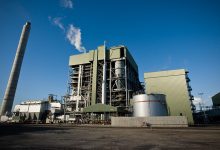The Queensland government says the state will be producing its own renewable hydrogen within two years, with the construction of a solar and battery-powered renewable hydrogen electrolyser near Chinchilla on the Darling Downs.
The Palaszczuk government on Tuesday announced plans for the demonstration facility, which it said would be “unique” for producing hydrogen using “behind the meter” renewable energy rather than power from the grid.
The hydrogen production facility will be developed by government-owned generator CS Energy, which is said to have generated “strong interest” from potential domestic off-takers after a successful feasibility study with Japanese industrial giant IHI Corporation.
State energy and hydorgen minister Mick de Brenni said the plant would be built beside CS Energy’s existing Kogan Creek coal-fired power station and would include a co-located solar farm, battery, a hydrogen electrolyser and hydrogen fuel cells.
A spokesperson told RenewEconomy on Tuesday that the Kogan Renewable Hydrogen Project would comprise 600-700kW electrolyser, a 2MW solar farm, 2MW/2MWh battery energy storage system (BESS) and 30kW hydrogen fuel cell. The government statement said the facility was looking to produce 55,000kgs of green hydrogen a year.
“The Kogan Creek project is an opportunity for publicly owned CS Energy to stake its territory in the hydrogen sector and expand Queenslanders’ ownership of renewable energy assets,” de Brenni said.
“Better yet, CS Energy are looking to support the decarbonisation of the heavy transport and haulage market with their locally produced zero emission fuel and discussions are well advanced with multiple potential off-takers.
“Transport is Australia’s second largest emitter after the electricity sector so making renewable hydrogen available offers enormous potential for transport sector innovation in Queensland,” the minister said.
CS Energy CEO Andrew Bills said the feasibility study had confirmed the optimum design of the renewable hydrogen plant and that Kogan Creek was a good location with existing assets and plenty of room to expand.
“This project offers multiple benefits for CS Energy because of hydrogen’s ability to be used as both a fuel and as a way to store energy,” Bills said.
“In addition to selling hydrogen into the domestic market, CS Energy can use the plant’s battery to provide grid stability services in the Frequency Control Ancillary Services Market.
“We’re also really excited about the skill development opportunities this project will provide our people.”
Construction of the electrolyser and connected solar and battery facilities is expected to commence in 2022, with commissioning slated for early 2023.
The announcement on the Kogan Creek renewable hydrogen project follows the huge news on Monday that the Palaszczuk government had partnered with “Twiggy” Forrest’s Fortescue Future Industries to develop a $114 million factory to produce hydrogen electrolysers west of Gladstone.
The iron ore billionaire, Forrest, unveiled plans to build a massive green energy manufacturing centre in central Queensland, focusing initially on hydrogen electrolysers before also moving on to wind turbine equipment, solar PV cells, and electrical cabling.
Meanwhile, mining giant Rio Tinto has joined the party, on Tuesday flagging potential off-take deals for large-scale wind and solar projects for its Queensland assets as it looks to accelerate its role in the transition to a low carbon economy.










